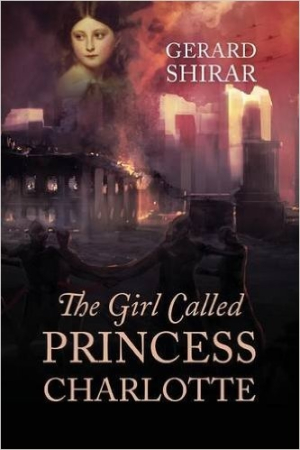The Girl Called Princess Charlotte
This novel provides a valuable look back into an all-too-recent past that broad history tends to define by unthinkable acts of cruelty.
The Girl Called Princess Charlotte by Gerard Shirar is a historical novel, courtroom mystery, and contemporary character exploration executed in a single narrative, accomplished through the use of skillful shifts between diary entries and events as they are unfolding, both in present-day Boston and in the tumultuous time in Europe that led to Hitler’s rise to power.
The novel’s contemporary protagonist is Teddy Murphy who, like Shirar, is a Massachusetts lawyer. The story starts when he is brought in to handle a case that centers on whether the current owner of a painting, “The Girl Called Princess Charlotte,” can really claim ownership if the work was illegally confiscated by the Nazi regime. The protagonist from the past is Markus Steiner, a Jewish art gallery owner who served with distinction in the German Army during World War I, but finds himself stripped of assets and national and personal pride as Hitler’s Third Reich becomes more powerful, forcing him to flee his homeland.
The case’s major mystery is how the deceased husband of its present owner came to possess the painting during his service in the American military in the waning days of World War II. Teddy feels the circumstances could be central to a successful case and employs a variety of strategies to uncover the truth. As part of his research, he becomes engrossed in the personal diaries of Steiner, which date from 1907 through 1939, and increasingly involved with his heretofore casual girlfriend Judith.
Somehow, Shirar successfully maintains movement in the plot and case-driven conflict while rendering each primary character as both complex and sympathetic. Indeed, a large part of what makes this novel intriguing is that there seems to be no bad guys except for Nazi Party faithful who truly believe in the Fuhrer’s philosophies. The story slows down when it detours into the details of Markus’s adventurous sex life, which make it clear that bondage, bisexuality, and other practices that might be considered alternative aren’t confined to modern times. Some sections seem more like history lessons than plot points, an aspect of the novel its modern hero even acknowledges a few times during interactions with his patient girlfriend, who serves as a sounding board and source of support throughout the case.
The Girl Called Princess Charlotte provides a valuable look back into an all-too-recent past that broad history tends to define by unthinkable acts of cruelty. The novel points to the fact that, even in the worst of circumstances, personal histories, everyday actions, and individual stories are oftentimes more complex and compassionate than history books can convey.
Reviewed by
Charlene Oldham
Disclosure: This article is not an endorsement, but a review. The publisher of this book provided free copies of the book and paid a small fee to have their book reviewed by a professional reviewer. Foreword Reviews and Clarion Reviews make no guarantee that the publisher will receive a positive review. Foreword Magazine, Inc. is disclosing this in accordance with the Federal Trade Commission’s 16 CFR, Part 255.

